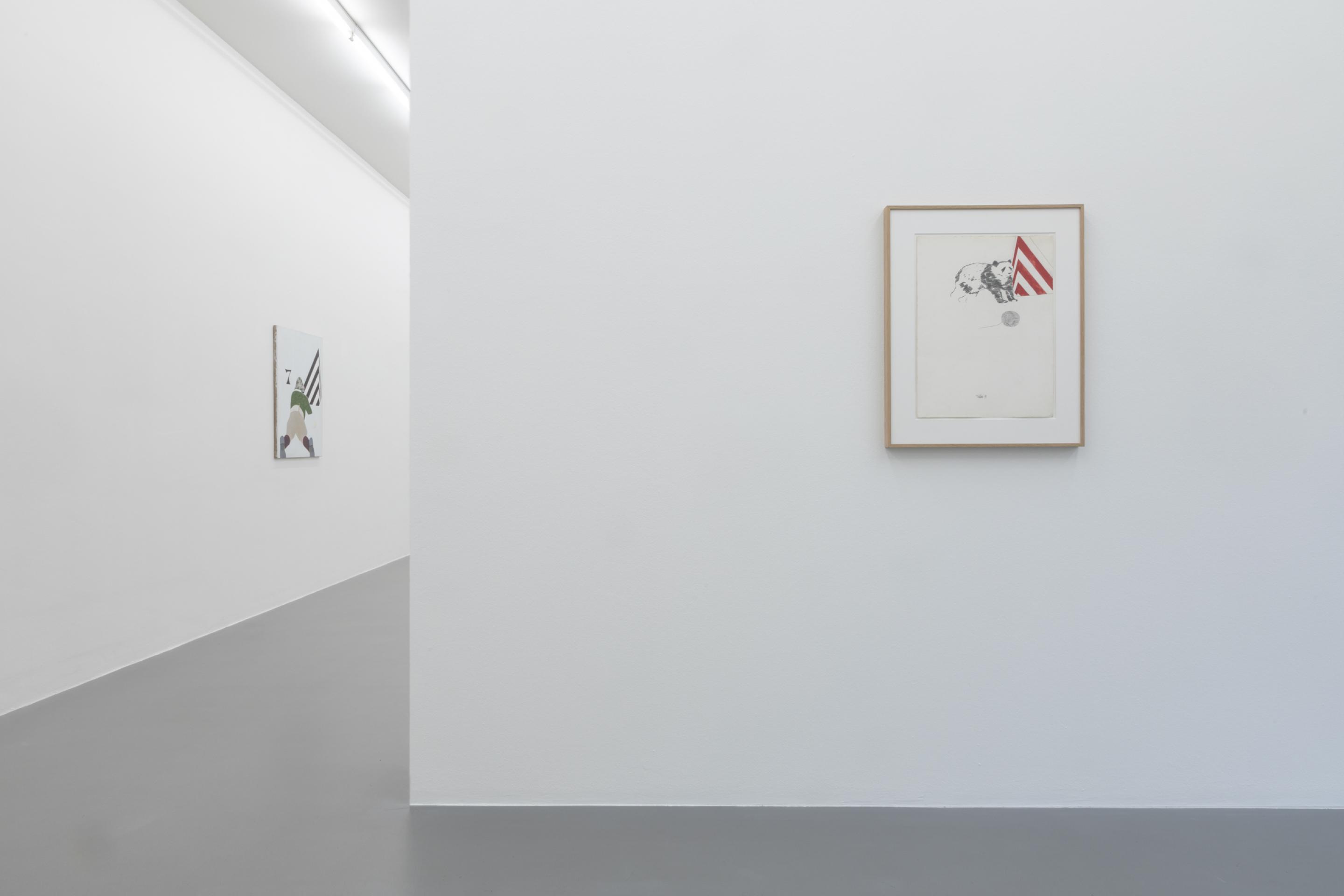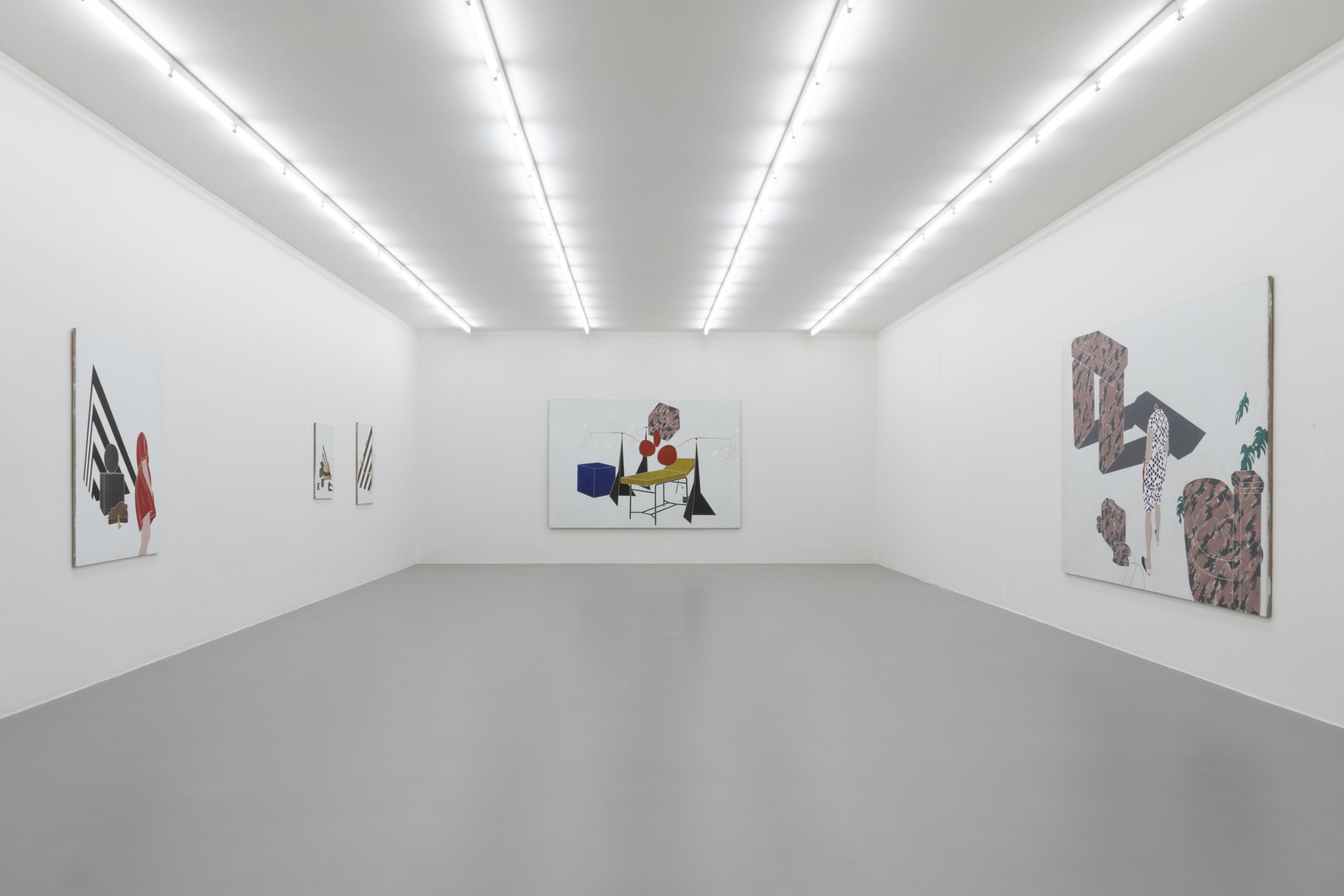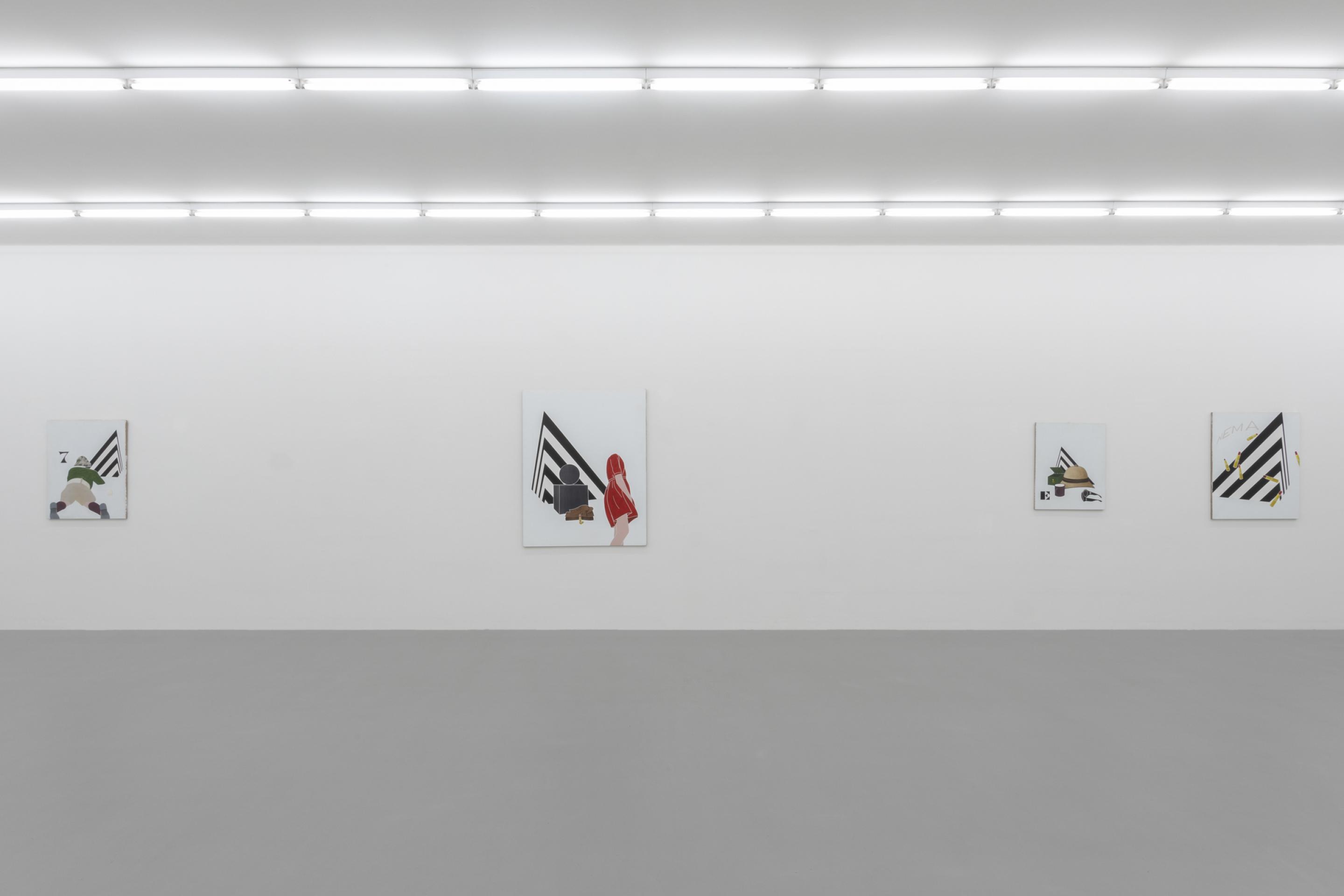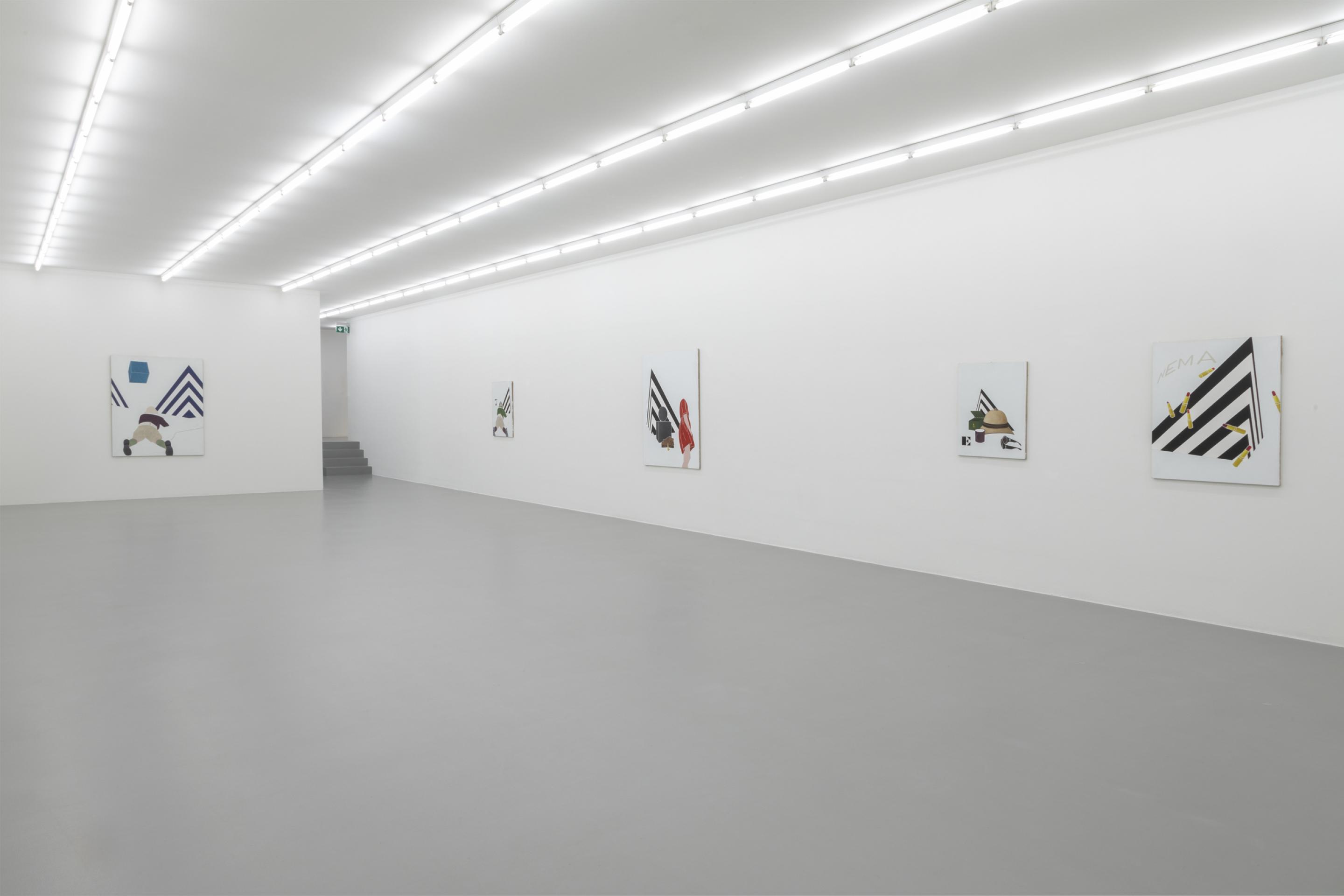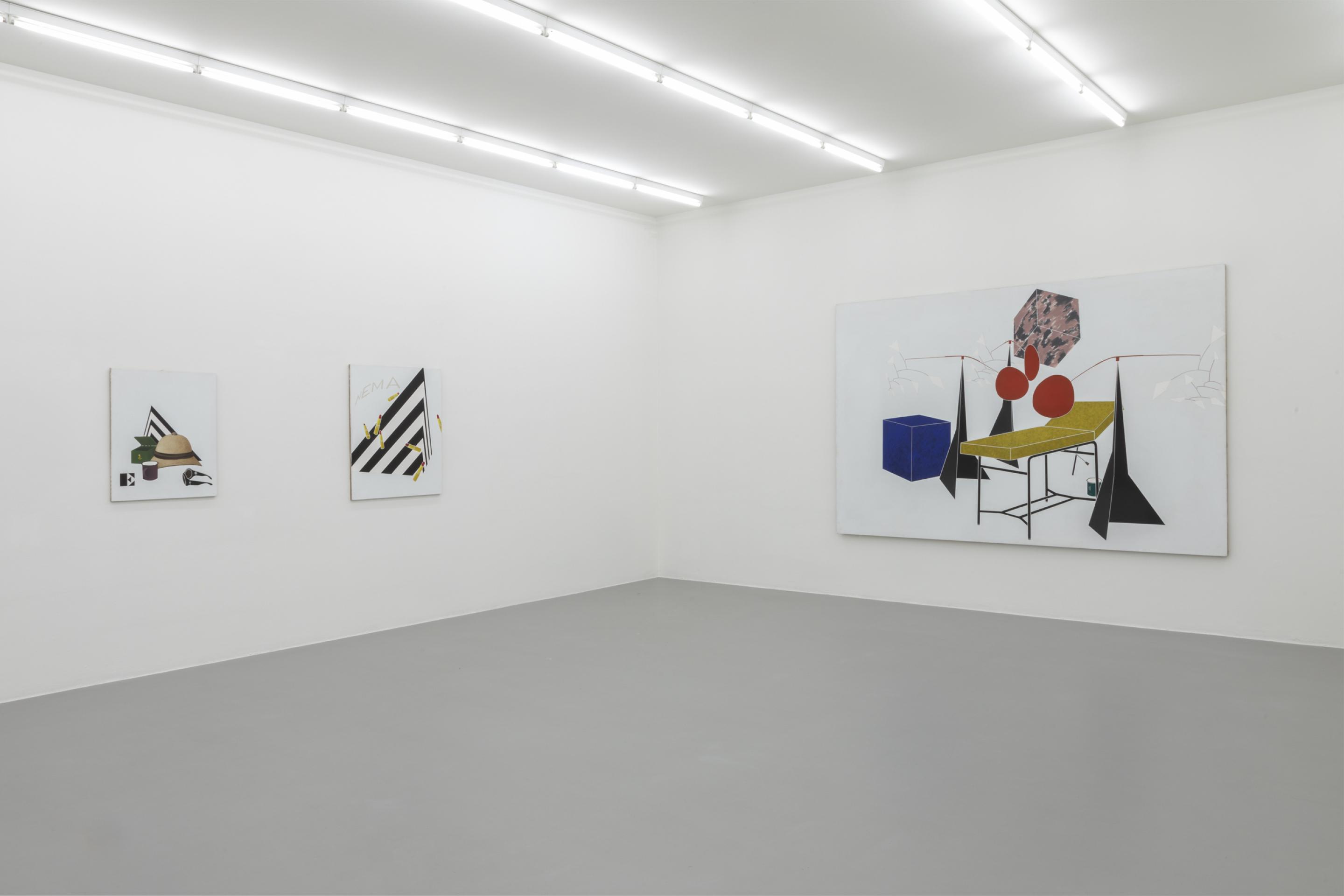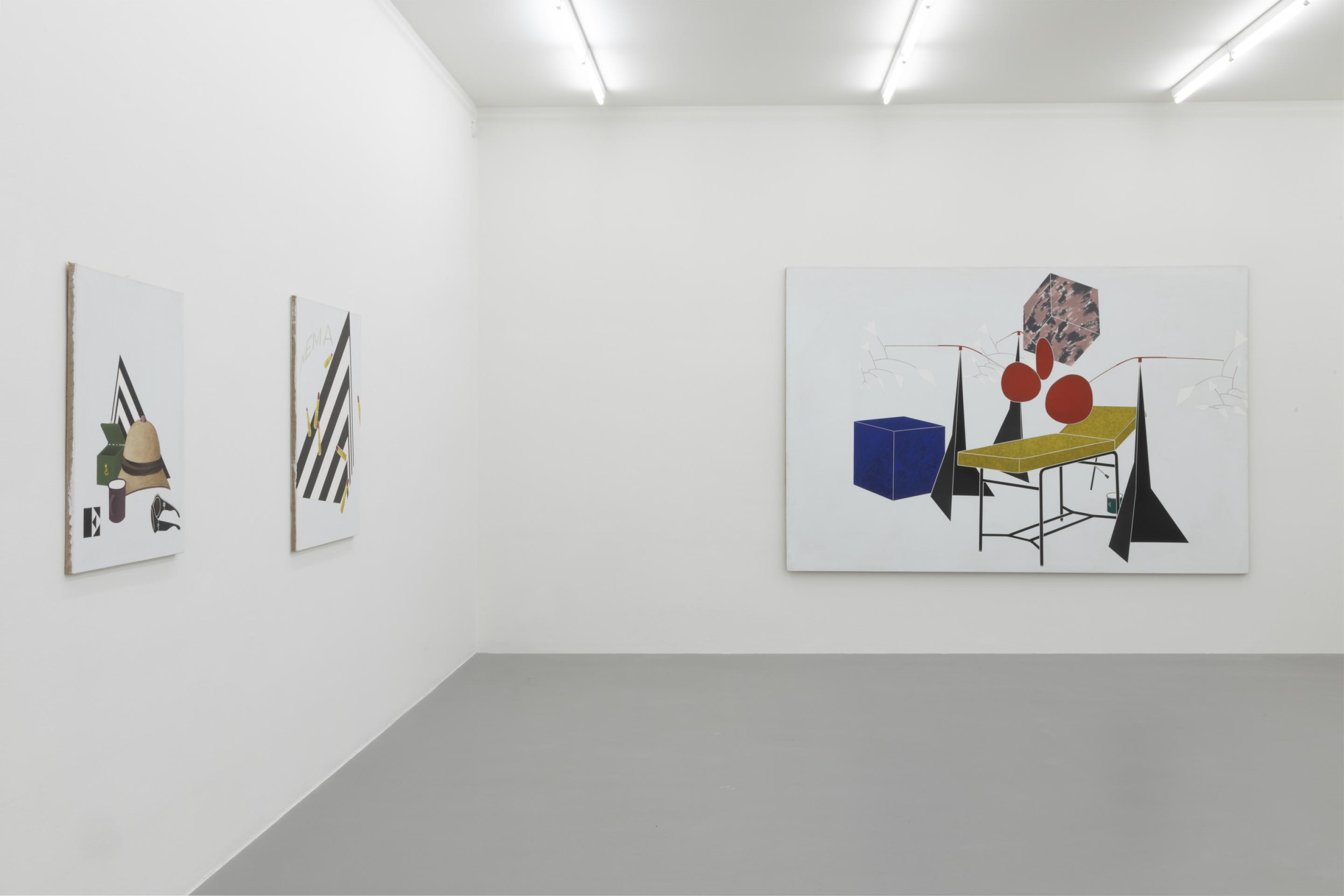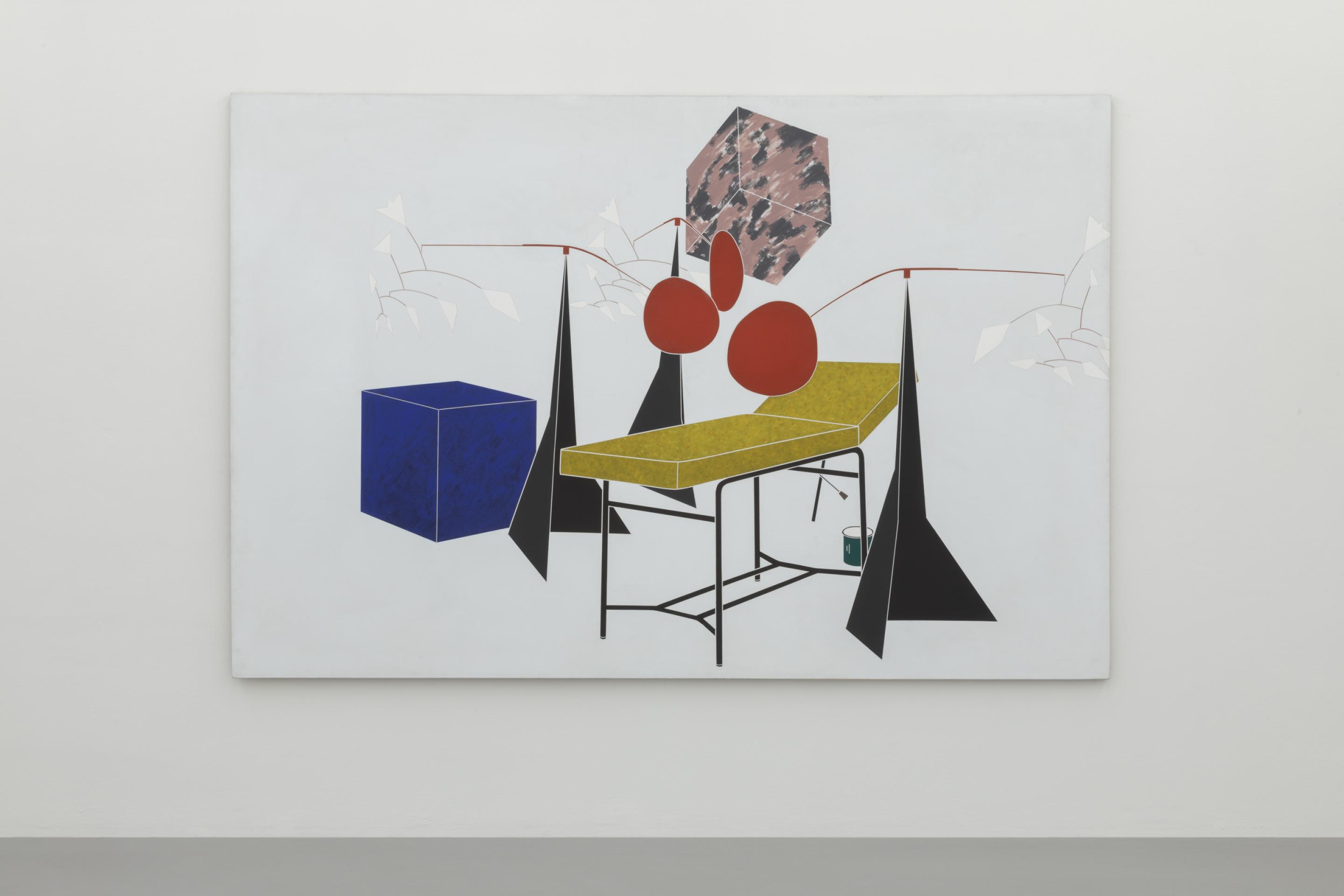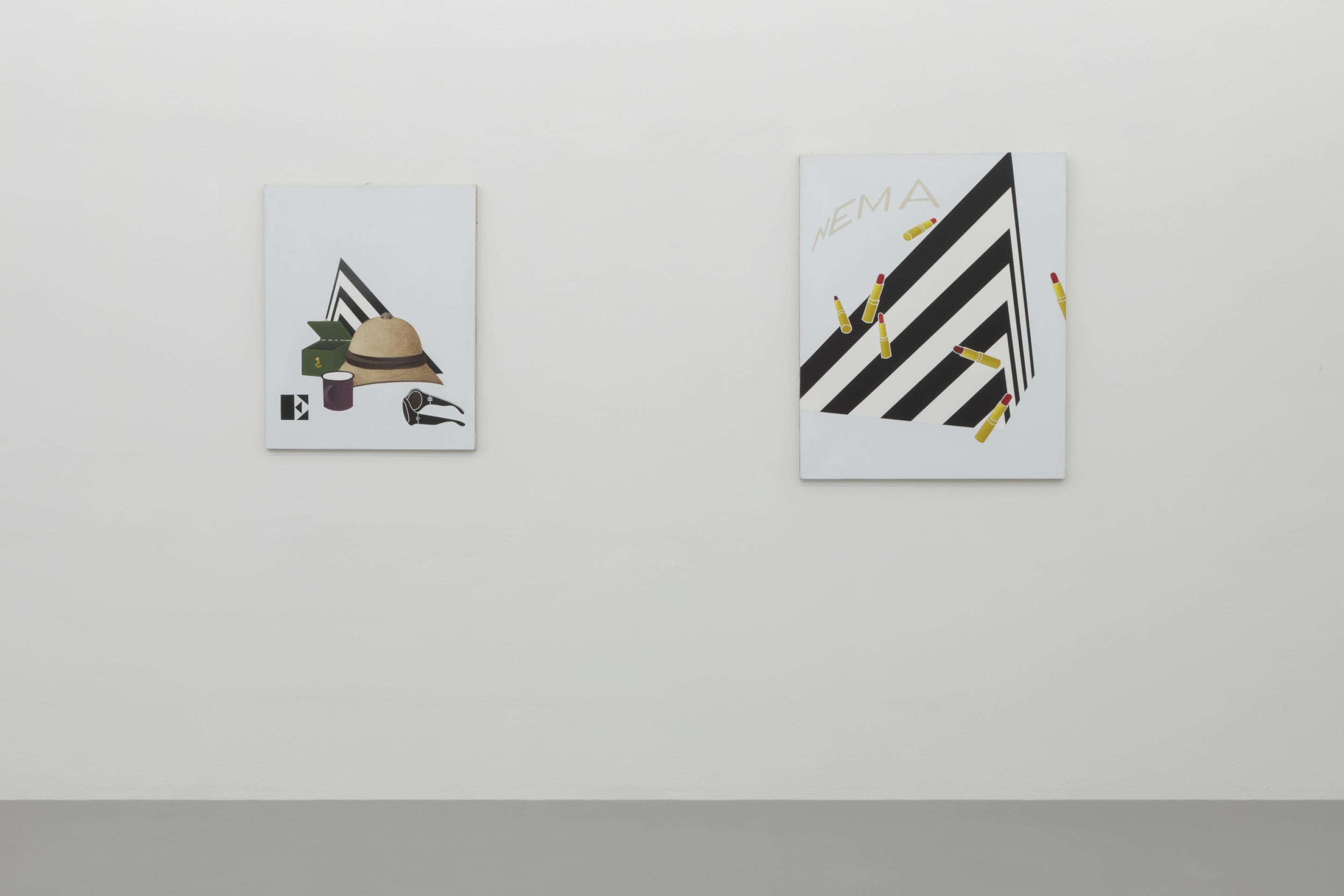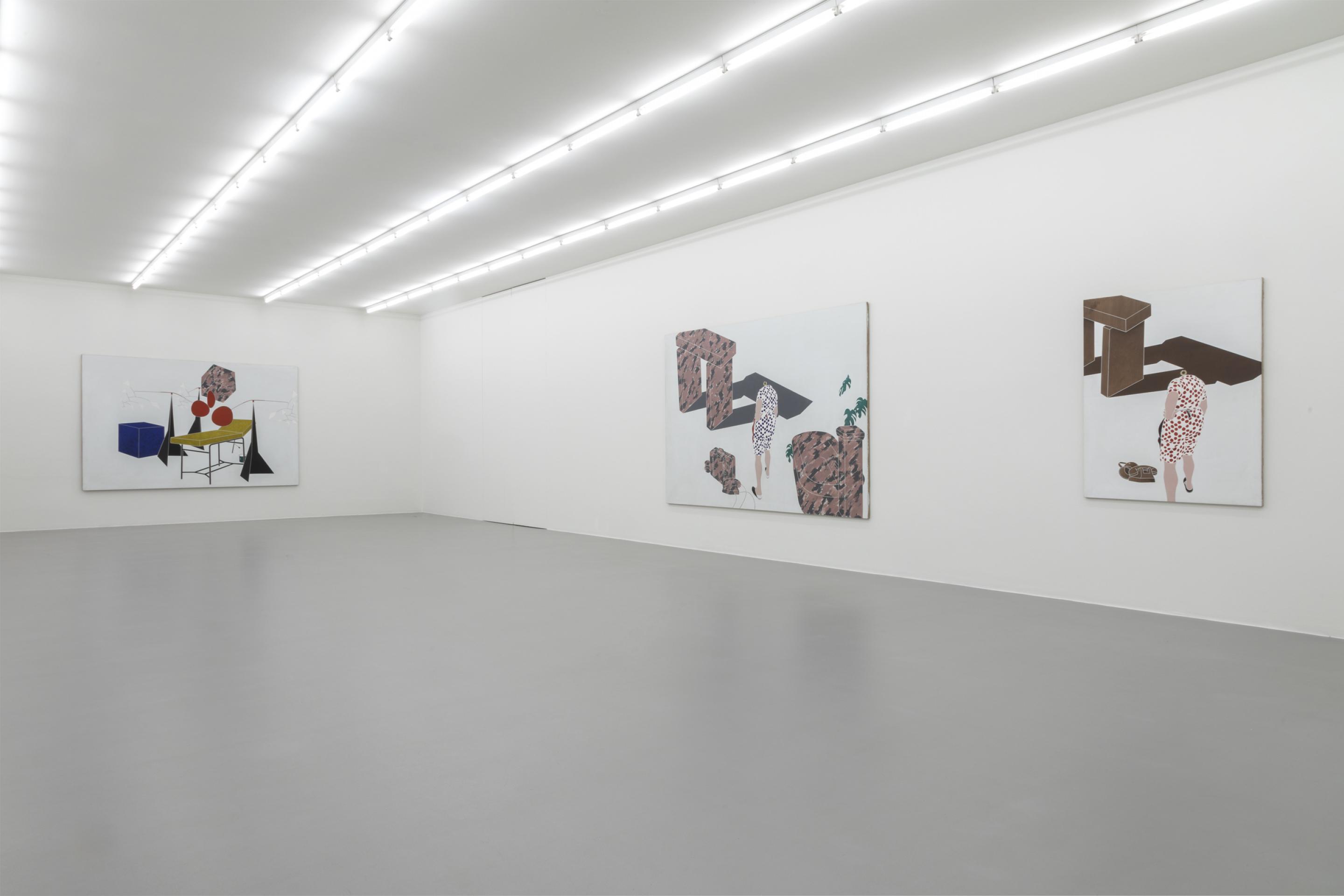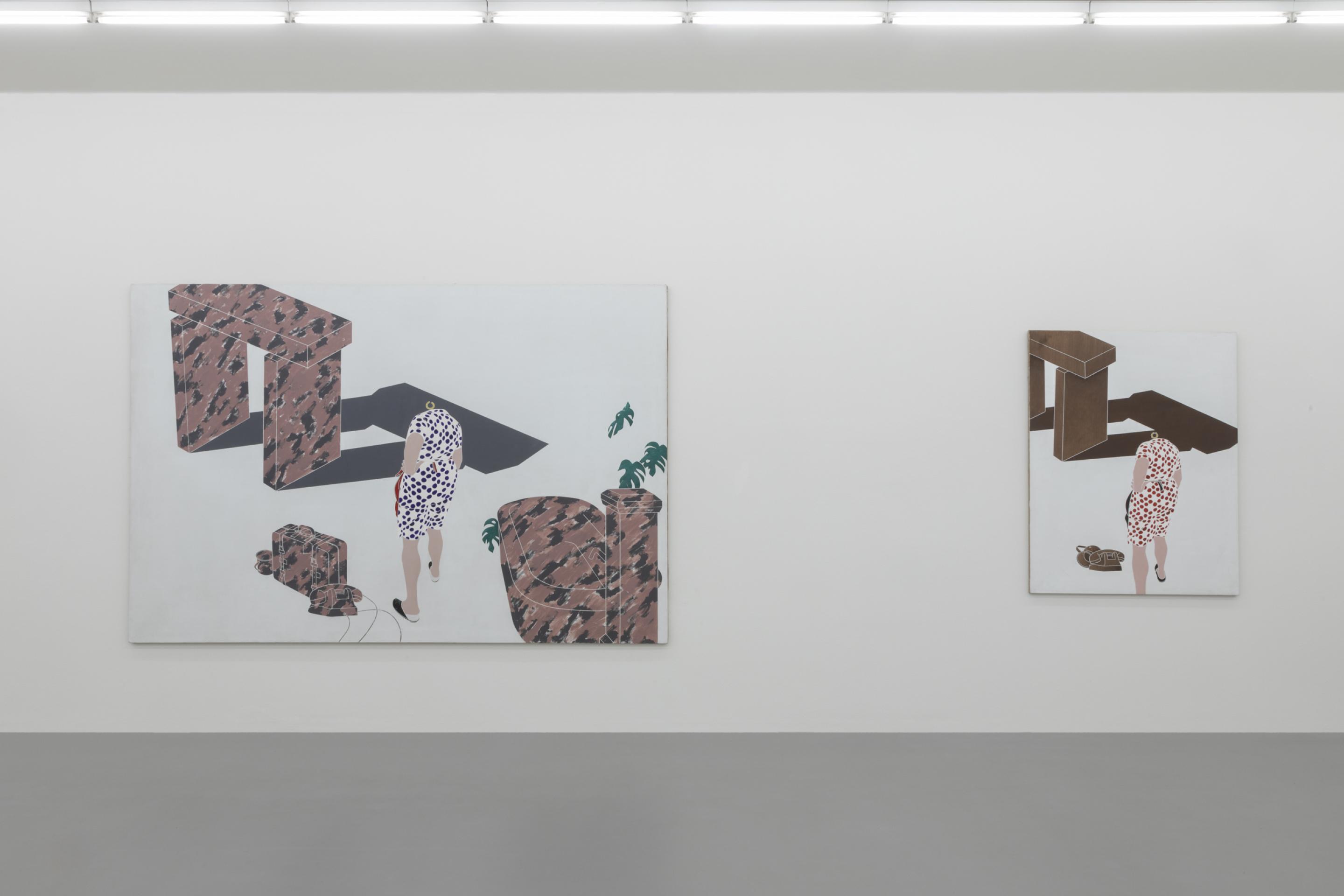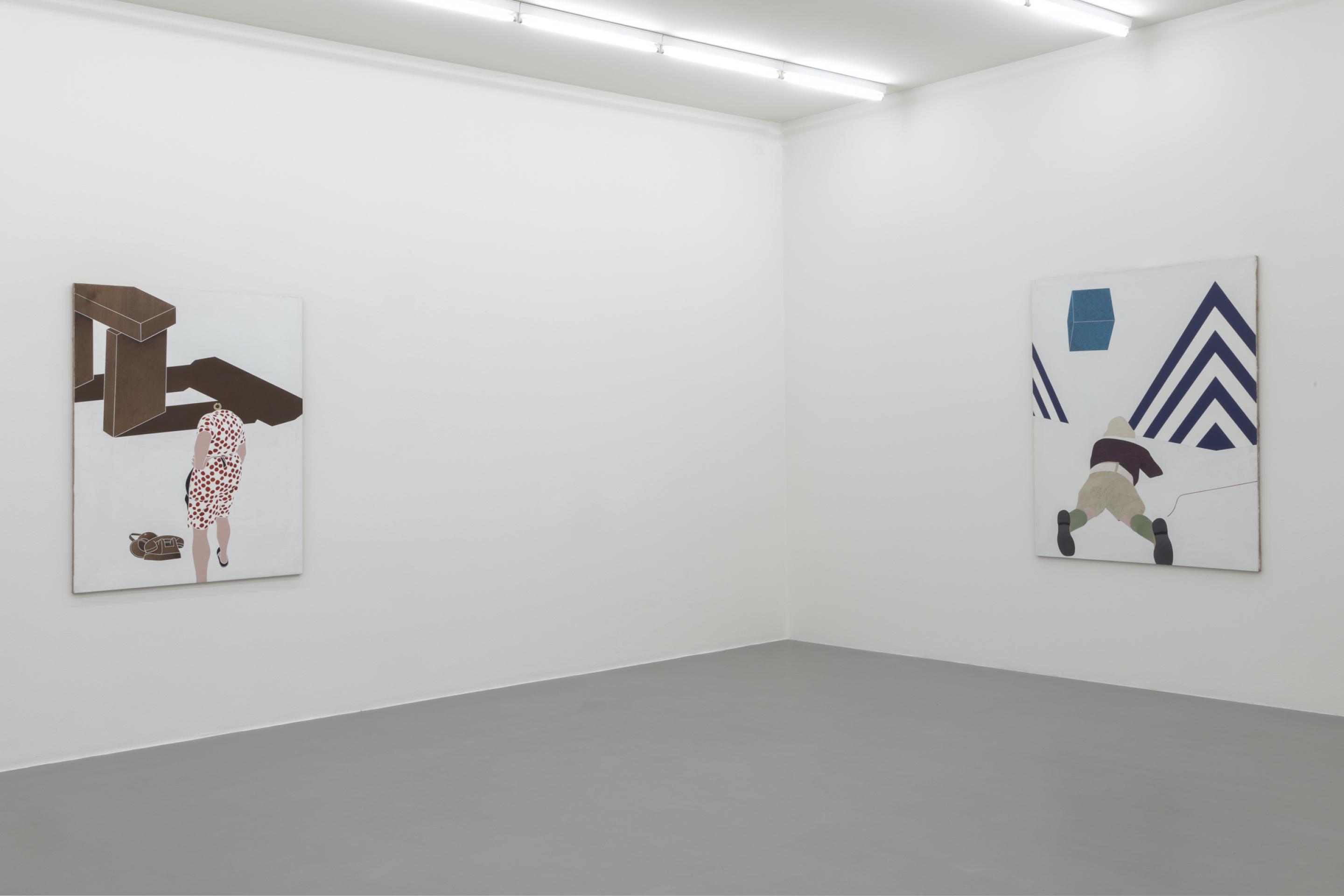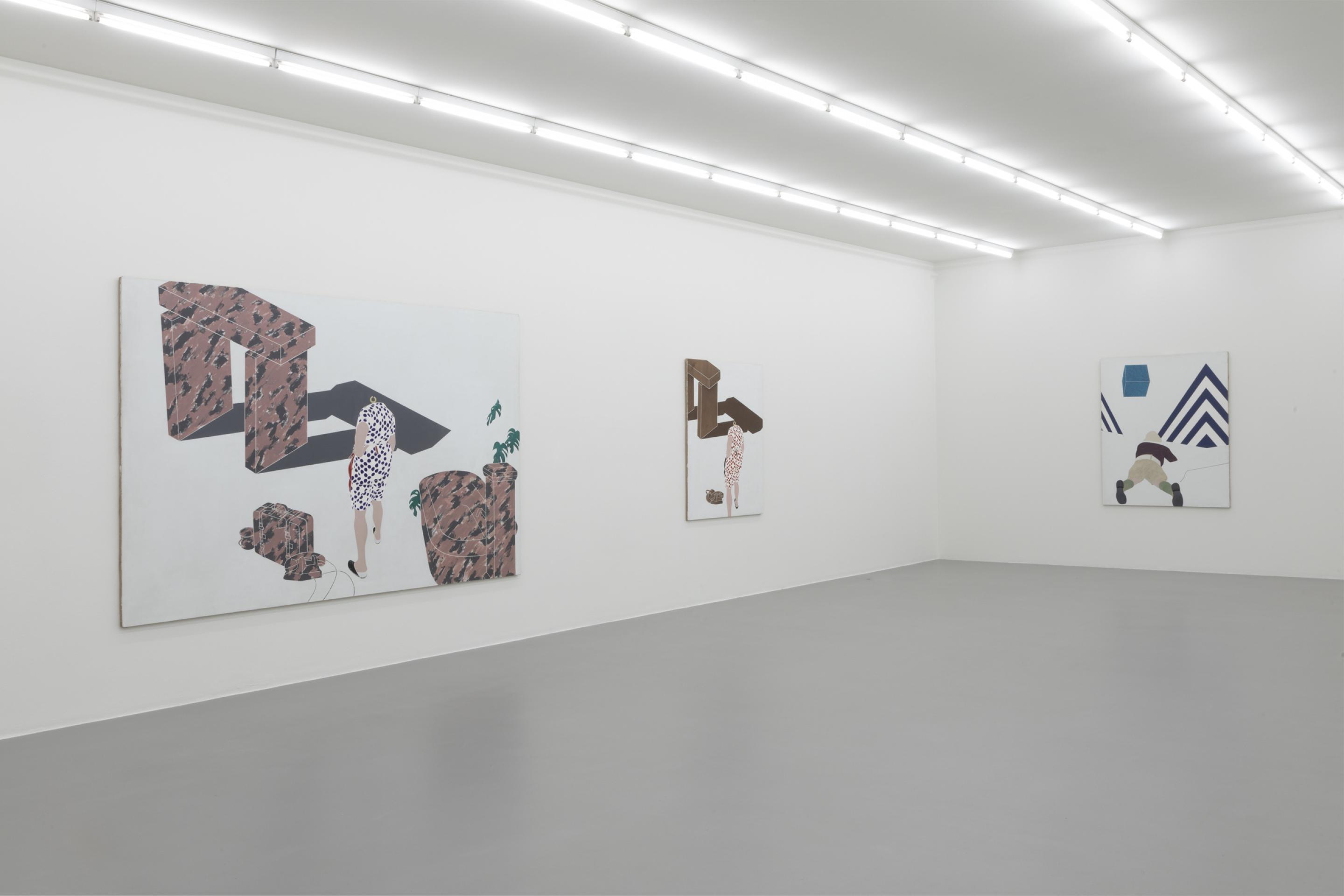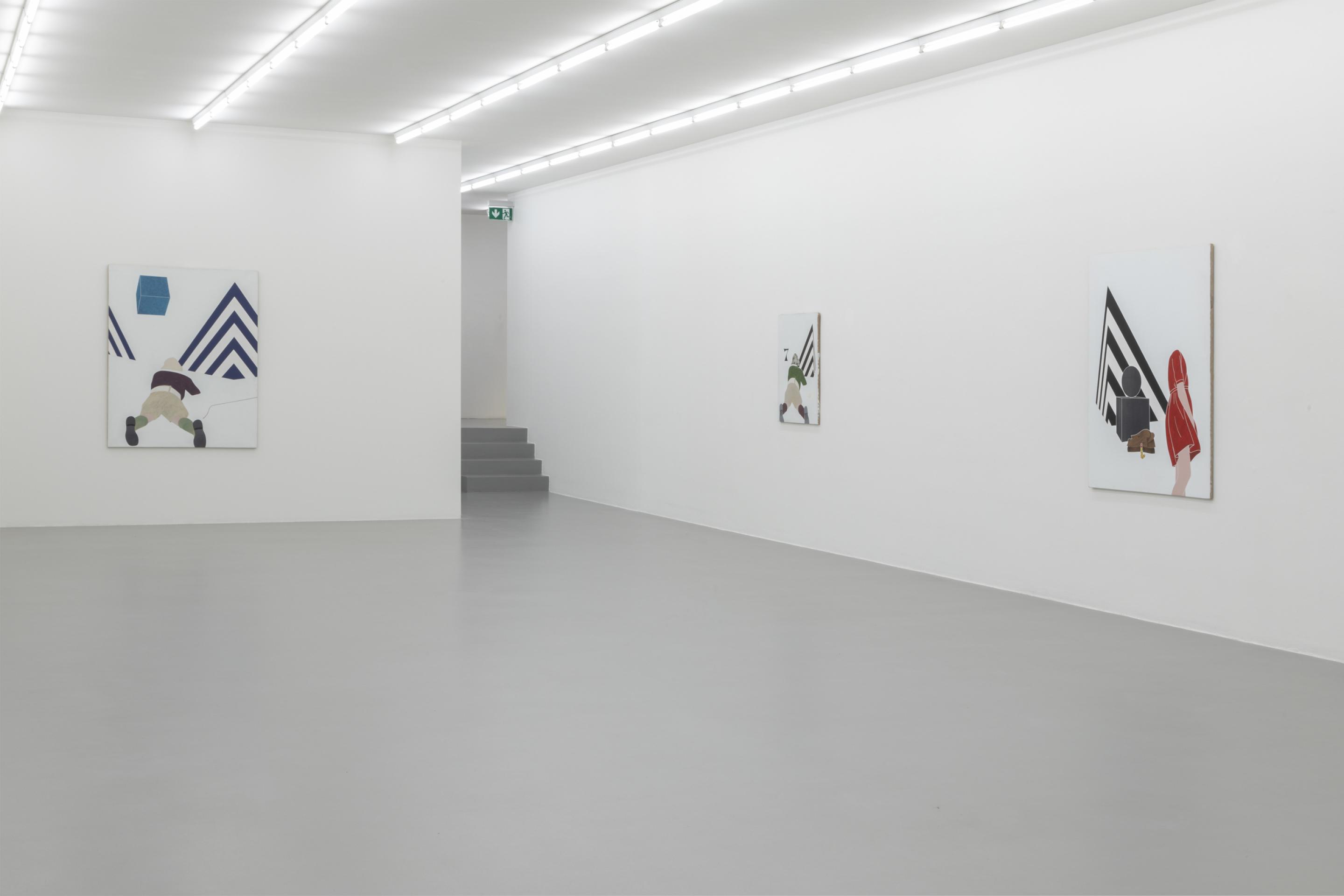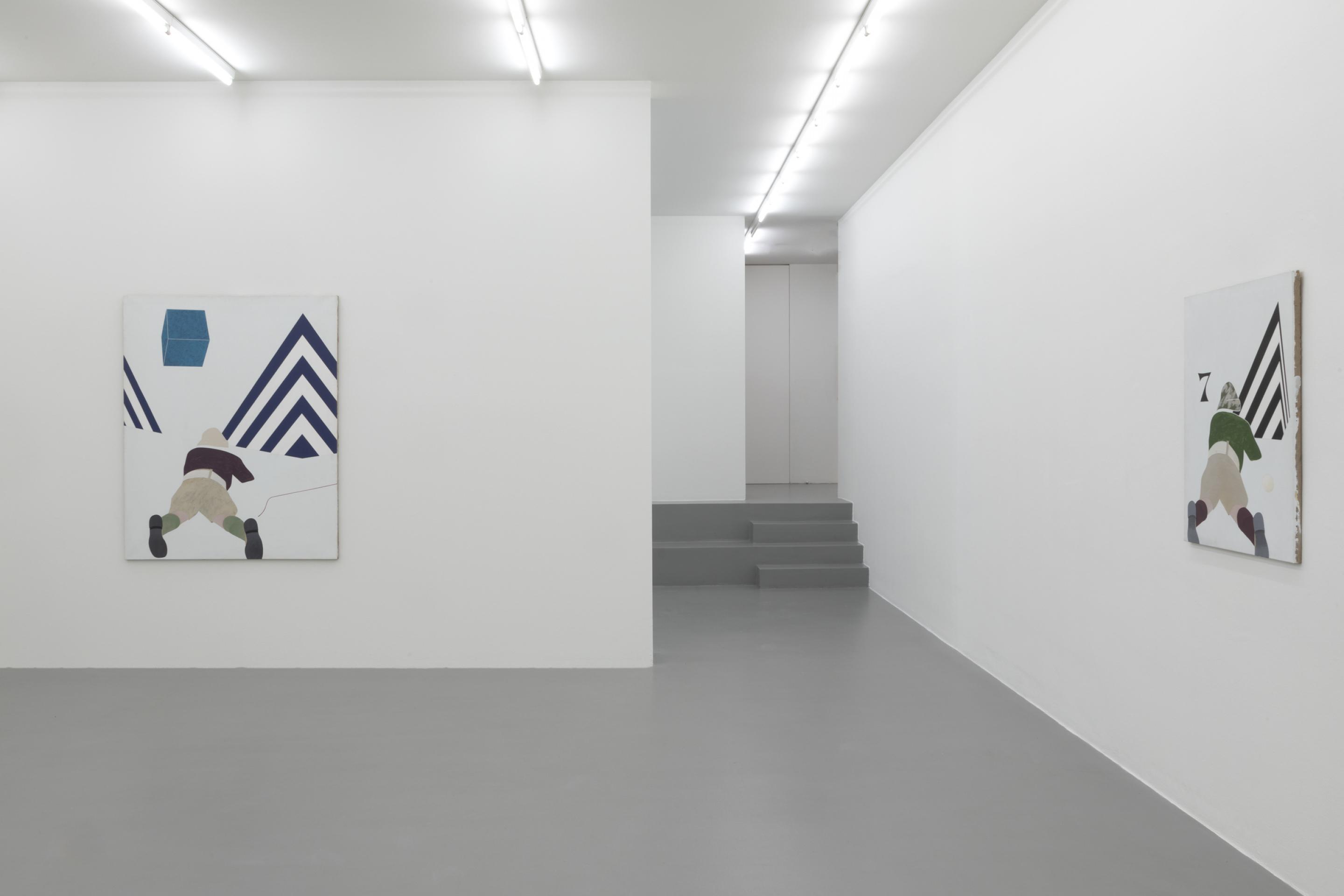EmilioTADINI
Viaggio in Italia
Gió Marconi, Milan
03.02.–05.03.2022
Viaggio in Italia
Gió Marconi, Milan
03.02.–05.03.2022
EN
Emilio Tadini
Viaggio in Italia
Opening: Thursday, February 3, 2022
February 4 - March 5, 2022
From Tuesday to Saturday, 11am - 7pm
Gió Marconi is very pleased to announce Viaggio in Italia, an exhibition with works from Emilio Tadini’s homonymous series from the early 1970s. The exhibition will be staged 20 years after the artist’s decease and over half a century after the body of work was first shown at the Studio Marconi in 1971.
In conjunction with the exhibition, the new Fondazione Marconi / Mousse Publishing publication Emilio Tadini. The Reality of the Image 1968-1972 by Francesco Guzzetti in collaboration with Archivio Emilio Tadini will be presented..
Emilio Tadini’s whole oeuvre, seemingly simple and straightforward, offers multiple layers of meaning with its dreamlike elements, everyday objects and fragmentary, often faceless and anonymous figures. He is unique in the Italian art scene, as he had adopted aspects of the Pop language when the movement was already on the wane and conceptual art and Arte Povera came into fashion. Although British Pop has been the artist’s point of departure with everyday objects playfully populating his canvases, his interest in the unconscious and the irrational induced him to depict scenes of fragmentation and alienation reminiscent of Surrealism.
Tadini has always had a serial approach to painting. Each new work cycle became a new chapter within his serialized novel of paintings in which the laws of space, time and gravity have been totally suspended.
Tadini was born in Milan in 1927. After his academic studies he started to write essays, novels and poetry. He has always been an avid theatre-goer and reader and has been particularly interested in American literature: both Ezra Pound’s Cantos and T.S. Eliot’s The Waste Land had been highly influential texts for Tadini as both authors had merged the high as well as the low language into their texts.
He has been an art critic for the Italian newspaper Corriere della Sera and has translated texts by Stendhal, Faulkner and Melville into Italian. Because of his love for literature and the written word, Tadini has always been a cross-disciplinary artist. Or as one of his friends and contemporaries, the writer Umberto Eco, has put it: “Tadini was a writer who paints, a painter who writes”. He was in constant search of new languages and forms of expression – both on the blank page and the blank canvas.
Tadini’s works from the early 1960s were still very much influenced by Max Ernst’s Surrealism and the mythical creatures of a Hieronymus Bosch. In the mid 60s he broke open the picture and reassembled the strewn around figures and objects into energetic depictions and vibrant paintings. Already these early paintings show the disintegration of the narration and the focus on individual recurring objects like certain pieces of furniture, lamps, sunglasses, shoes or headless figures.
Tadini started to commit himself to a new figuration which he saw as an effort to “represent the complexity of the relationships that constitute reality”. Prompted by a profound interest in Freud’s psychoanalysis and especially his Interpretation of Dreams, he developed paintings with multiple layers of meaning which focused not solely on the depicted objects per se but much rather on the relationships between them. He called this new representation integral realism, a term that included both the conscious as well as the unconscious.
Also Pop Art, especially the British interpretation of it, became an important influence for Tadini. In 1966, his Milan gallery, Studio Marconi, had collaborated with the Robert Fraser Gallery in London and had organized a group exhibition with the likes of Peter Blake, Patrick Caulfield, Richard Hamilton, Derek Boshier and Eduardo Paolozzi.
Tadini has therefore had first-hand access to these artists and their works. A shift in his own practice is clearly visible during these years as also he started to integrate popular images, references to art history and elements from high and low culture into his paintings.
As Arturo Carlo Quintavalle notes: “Pop Art (…) was not a direct participation in everyday reality, (…), because Tadini analysed not so much the quotation of objects as carried out by those artists but rather the intentionality and purpose behind the quotations, which he felt was “mystifying”. (…) Irony and protest were at the basis of British Pop art, whereas underlying the American version was simply the uncovering of mass mythologies, and enunciation.”
Throughout the late 1960s and 1970s, Tadini amassed a large photographic archive of objects, urban landscapes, interior views, still lives, figures in all sorts of poses and advertisements. He subsequently started to use these images by projecting and tracing them onto canvas thereby combining two media. He transformed the surface of the painting into a projection field onto which he projected his images.
These canvases are characterised by a combination of elements from low and high culture, art historical references and pop cultural images. Some of his best-known series from the late 1960s, Vita di Voltaire, L’uomo dell’organizzazione, Circuito chiuso and Color & Co., were made using this technique. Also for Viaggio in Italia from the early 1970s, Tadini resorted to his photographic archive.
As in Tadini’s previous bodies of work, he does not depict stories but paints a selection of disconnected everyday objects onto his canvases: from a telephone, a cup, a suitcase or a fountain to recurring design objects, artworks and geometrical forms. As Francesco Guzzetti notes in the just published The Reality of the Image 1968-1972: “Like still lives, Tadini’s paintings propose nothing more than the pure object, rendered in the denoting quality of paint and in the internal arrangement of the space of the painting”.
Omnipresent in the Viaggio series are Tadini’s solitary, headless figures that have already been part of some of his earlier work cycles, like L’uomo dell’organizzazione or Vita di Voltaire: Tadini’s figures consist of bodies, movements and gestures but they are lacking both their faces and heads. Reminiscent of Brecht’s epic theatre, these headless creatures add to the alienation effect of his works.
For a well-read person like Tadini, it seems almost impossible to look at Viaggio in Italia without thinking about Johann Wolfgang Goethe’s homonymous travelogue in which the author describes his Italian stay from September 1786 to May 1788. A noteworthy similarity between both Italian Journeys is that Goethe as well as Tadini rely considerably on their self-produced images and their own visual repertoires: while he visits Italy, Goethe sketches and produces watercolours extensively, whereas Tadini harks back to a myriad of photographic images he has taken and neatly archived in preparation for his paintings. These preparatory drawings and photos are first references of what will ultimately be translated into text and onto canvas.
In one of the large scale paintings from the Viaggio series, Tadini forthrightly quotes a well-known Johann Heinrich Wilhelm Tischbein graphic Goethe am Fenster der römischen Wohnung am Corso depicting a standing Goethe from behind who is gazing out of his window. Tadini’s version shows both the open and closed windows and endows the headless standing figure with the exact same set of clothes -long socks, a pair of knickerbockers and shirt- as in the original.
In his journal, Goethe has been particularly interested in Italy’s antique architecture, its geography, geology and botany and he made multiple mineralogical observations. Tadini seems to mirror that interest in his recurrent depictions of architectural forms, columnar shapes, cubes and pyramids out of different kinds of marbles and rocks.
As in previous bodies of work, Tadini uses recurring motives like a black and white striped pyramidal element, a headless standing female figure, a telephone, a beige sun helmet or red lipsticks. Through his choice of objects, Tadini transfers his journey more into the presence. His Italian journey is very much about contemporary everyday life as the phone, the letters (ci)nema, the stylish female outfits, the various design objects or the Calder sculpture clearly suggest.
While including references to antiquity, Tadini’s Viaggio comprises also the realms of design, art, culture, fashion and style. His Italian vision combines the past with modernity.
Goethe’s Italian Journey is not only a thorough description of places, persons and things, but also a psychological document and in part a story of initiation. His journey really is a quest. The purpose of the trip is the author’s self-formation and self-awareness and ultimately his self-discovery. One of Goethe’s recurring key words is objects as the author’s aim is to get to know himself by means of the multitude of objects he encounters: from examples of architecture or rock formations to plants, artworks and simple stones. The array of objects seems endless and as the author puts it: “Every object well contemplated opens a new organ of perception in us (…). I wanted to discover myself in the objects I see, (…), to learn to know myself by or through the objects”.
This object-based point of view, in which the meditation on different kinds of objects leads to one’s better self-knowledge, very much connects Goethe’s Italian Journey with Tadini’s which ultimately is also a depiction of various objects, or as Tadini has noted: “Art as a means to intensify the perceptibility of things”.
Georg F. Schwarbaner puts it in a nutshell: “Each object, each symbol, every fragment of a sentence and of a word has its specific meaning. Tadini’s compositions resemble an image-encyclopaedia of our century.”
Viaggio in Italia
Opening: Thursday, February 3, 2022
February 4 - March 5, 2022
From Tuesday to Saturday, 11am - 7pm
Gió Marconi is very pleased to announce Viaggio in Italia, an exhibition with works from Emilio Tadini’s homonymous series from the early 1970s. The exhibition will be staged 20 years after the artist’s decease and over half a century after the body of work was first shown at the Studio Marconi in 1971.
In conjunction with the exhibition, the new Fondazione Marconi / Mousse Publishing publication Emilio Tadini. The Reality of the Image 1968-1972 by Francesco Guzzetti in collaboration with Archivio Emilio Tadini will be presented..
Emilio Tadini’s whole oeuvre, seemingly simple and straightforward, offers multiple layers of meaning with its dreamlike elements, everyday objects and fragmentary, often faceless and anonymous figures. He is unique in the Italian art scene, as he had adopted aspects of the Pop language when the movement was already on the wane and conceptual art and Arte Povera came into fashion. Although British Pop has been the artist’s point of departure with everyday objects playfully populating his canvases, his interest in the unconscious and the irrational induced him to depict scenes of fragmentation and alienation reminiscent of Surrealism.
Tadini has always had a serial approach to painting. Each new work cycle became a new chapter within his serialized novel of paintings in which the laws of space, time and gravity have been totally suspended.
Tadini was born in Milan in 1927. After his academic studies he started to write essays, novels and poetry. He has always been an avid theatre-goer and reader and has been particularly interested in American literature: both Ezra Pound’s Cantos and T.S. Eliot’s The Waste Land had been highly influential texts for Tadini as both authors had merged the high as well as the low language into their texts.
He has been an art critic for the Italian newspaper Corriere della Sera and has translated texts by Stendhal, Faulkner and Melville into Italian. Because of his love for literature and the written word, Tadini has always been a cross-disciplinary artist. Or as one of his friends and contemporaries, the writer Umberto Eco, has put it: “Tadini was a writer who paints, a painter who writes”. He was in constant search of new languages and forms of expression – both on the blank page and the blank canvas.
Tadini’s works from the early 1960s were still very much influenced by Max Ernst’s Surrealism and the mythical creatures of a Hieronymus Bosch. In the mid 60s he broke open the picture and reassembled the strewn around figures and objects into energetic depictions and vibrant paintings. Already these early paintings show the disintegration of the narration and the focus on individual recurring objects like certain pieces of furniture, lamps, sunglasses, shoes or headless figures.
Tadini started to commit himself to a new figuration which he saw as an effort to “represent the complexity of the relationships that constitute reality”. Prompted by a profound interest in Freud’s psychoanalysis and especially his Interpretation of Dreams, he developed paintings with multiple layers of meaning which focused not solely on the depicted objects per se but much rather on the relationships between them. He called this new representation integral realism, a term that included both the conscious as well as the unconscious.
Also Pop Art, especially the British interpretation of it, became an important influence for Tadini. In 1966, his Milan gallery, Studio Marconi, had collaborated with the Robert Fraser Gallery in London and had organized a group exhibition with the likes of Peter Blake, Patrick Caulfield, Richard Hamilton, Derek Boshier and Eduardo Paolozzi.
Tadini has therefore had first-hand access to these artists and their works. A shift in his own practice is clearly visible during these years as also he started to integrate popular images, references to art history and elements from high and low culture into his paintings.
As Arturo Carlo Quintavalle notes: “Pop Art (…) was not a direct participation in everyday reality, (…), because Tadini analysed not so much the quotation of objects as carried out by those artists but rather the intentionality and purpose behind the quotations, which he felt was “mystifying”. (…) Irony and protest were at the basis of British Pop art, whereas underlying the American version was simply the uncovering of mass mythologies, and enunciation.”
Throughout the late 1960s and 1970s, Tadini amassed a large photographic archive of objects, urban landscapes, interior views, still lives, figures in all sorts of poses and advertisements. He subsequently started to use these images by projecting and tracing them onto canvas thereby combining two media. He transformed the surface of the painting into a projection field onto which he projected his images.
These canvases are characterised by a combination of elements from low and high culture, art historical references and pop cultural images. Some of his best-known series from the late 1960s, Vita di Voltaire, L’uomo dell’organizzazione, Circuito chiuso and Color & Co., were made using this technique. Also for Viaggio in Italia from the early 1970s, Tadini resorted to his photographic archive.
As in Tadini’s previous bodies of work, he does not depict stories but paints a selection of disconnected everyday objects onto his canvases: from a telephone, a cup, a suitcase or a fountain to recurring design objects, artworks and geometrical forms. As Francesco Guzzetti notes in the just published The Reality of the Image 1968-1972: “Like still lives, Tadini’s paintings propose nothing more than the pure object, rendered in the denoting quality of paint and in the internal arrangement of the space of the painting”.
Omnipresent in the Viaggio series are Tadini’s solitary, headless figures that have already been part of some of his earlier work cycles, like L’uomo dell’organizzazione or Vita di Voltaire: Tadini’s figures consist of bodies, movements and gestures but they are lacking both their faces and heads. Reminiscent of Brecht’s epic theatre, these headless creatures add to the alienation effect of his works.
For a well-read person like Tadini, it seems almost impossible to look at Viaggio in Italia without thinking about Johann Wolfgang Goethe’s homonymous travelogue in which the author describes his Italian stay from September 1786 to May 1788. A noteworthy similarity between both Italian Journeys is that Goethe as well as Tadini rely considerably on their self-produced images and their own visual repertoires: while he visits Italy, Goethe sketches and produces watercolours extensively, whereas Tadini harks back to a myriad of photographic images he has taken and neatly archived in preparation for his paintings. These preparatory drawings and photos are first references of what will ultimately be translated into text and onto canvas.
In one of the large scale paintings from the Viaggio series, Tadini forthrightly quotes a well-known Johann Heinrich Wilhelm Tischbein graphic Goethe am Fenster der römischen Wohnung am Corso depicting a standing Goethe from behind who is gazing out of his window. Tadini’s version shows both the open and closed windows and endows the headless standing figure with the exact same set of clothes -long socks, a pair of knickerbockers and shirt- as in the original.
In his journal, Goethe has been particularly interested in Italy’s antique architecture, its geography, geology and botany and he made multiple mineralogical observations. Tadini seems to mirror that interest in his recurrent depictions of architectural forms, columnar shapes, cubes and pyramids out of different kinds of marbles and rocks.
As in previous bodies of work, Tadini uses recurring motives like a black and white striped pyramidal element, a headless standing female figure, a telephone, a beige sun helmet or red lipsticks. Through his choice of objects, Tadini transfers his journey more into the presence. His Italian journey is very much about contemporary everyday life as the phone, the letters (ci)nema, the stylish female outfits, the various design objects or the Calder sculpture clearly suggest.
While including references to antiquity, Tadini’s Viaggio comprises also the realms of design, art, culture, fashion and style. His Italian vision combines the past with modernity.
Goethe’s Italian Journey is not only a thorough description of places, persons and things, but also a psychological document and in part a story of initiation. His journey really is a quest. The purpose of the trip is the author’s self-formation and self-awareness and ultimately his self-discovery. One of Goethe’s recurring key words is objects as the author’s aim is to get to know himself by means of the multitude of objects he encounters: from examples of architecture or rock formations to plants, artworks and simple stones. The array of objects seems endless and as the author puts it: “Every object well contemplated opens a new organ of perception in us (…). I wanted to discover myself in the objects I see, (…), to learn to know myself by or through the objects”.
This object-based point of view, in which the meditation on different kinds of objects leads to one’s better self-knowledge, very much connects Goethe’s Italian Journey with Tadini’s which ultimately is also a depiction of various objects, or as Tadini has noted: “Art as a means to intensify the perceptibility of things”.
Georg F. Schwarbaner puts it in a nutshell: “Each object, each symbol, every fragment of a sentence and of a word has its specific meaning. Tadini’s compositions resemble an image-encyclopaedia of our century.”
